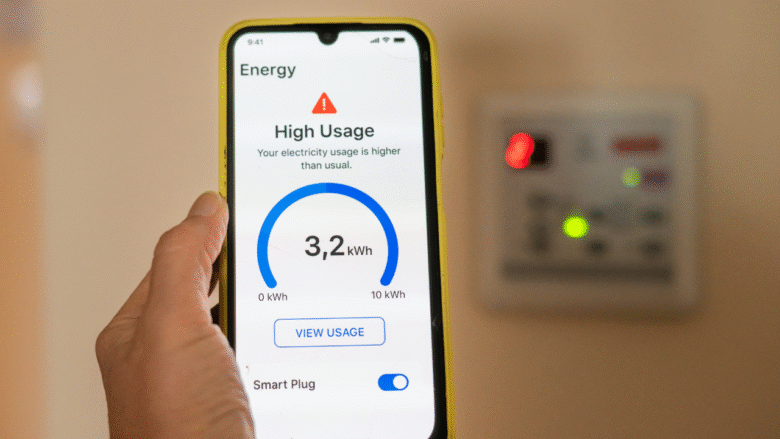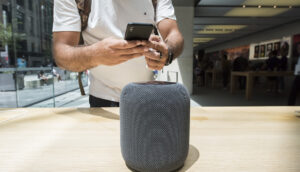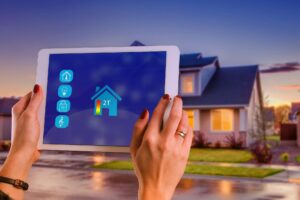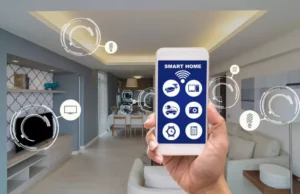Today, managing household expenses more effectively is more important than ever. Energy bills are one of the largest fixed costs for homeowners. Thanks to technological advancements, smart energy devices are making energy management easier. These devices track, control, and optimize water, electricity, and gas usage in the home. This allows people to save money, reduce waste, and protect the environment. By understanding how smart energy devices work and how to use them in daily life, people can make informed choices to reduce utility costs like water, electricity, and gas without sacrificing comfort and convenience.
How to Understand Smart Energy Devices
Smart energy devices are a fantastic new type of device that monitors and manages a home’s energy consumption. They are typically internet-connected, allowing users to view real-time data, set schedules, and control energy usage remotely. Examples include smart outlets, smart tools, smart thermostats, and home energy monitors. These smart devices track consumption, identify inefficient energy usage, and offer energy-saving suggestions. Unlike traditional systems, smart energy devices can interact with and adapt to a user’s lifestyle and preferences. This allows homeowners to maximize their energy consumption.
The Functions of Smart Thermostats
Smart thermostats are one of the best ways to effectively reduce energy costs. These devices learn how people use their homes, automatically adjust heating and cooling based on the occupants, and find the optimal temperature setting to minimize energy consumption. For example, a smart thermostat can lower the temperature when no one is home or gradually lower the room temperature before you arrive home from work. Many smart thermostats can be controlled via a smartphone app, allowing users to easily change settings at any time. This automation prevents energy waste from unnecessary heating or cooling, resulting in significant savings on gas and electricity bills.
Energy-Saving Smart Lighting
Smart energy devices also play a crucial role in lighting. Traditional light bulbs consume a lot of electricity and often remain on when not needed, leading to higher energy bills. Smart lighting systems, including LED bulbs and automatic lighting control systems, can adjust light intensity based on different times of day or people’s activities and can also switch lights on and off remotely. You can also add motion sensors to ensure lights only turn on when needed. With smart lighting, homes can reduce energy consumption while maintaining comfort and convenience, thus lowering energy bills.
Smart Cables and Outlets
Smart cables and outlets allow you to easily manage the energy consumption of any device. These devices can be set to automatically switch off when not in use, or they can be controlled remotely via a smartphone app. For example, you can use a smart cable to completely turn off televisions, computers, and chargers—electronic devices that consume standby power. This device helps eliminate “standby power consumption,” which is often overlooked but can significantly increase your monthly energy bill. Smart cables are a practical and cost-effective way to manage your home’s energy consumption.
Home Energy Monitors
Home energy monitors are high-tech smart devices that accurately display your current electricity consumption. These monitors track the energy consumption of each appliance and the entire home, enabling you to identify areas of energy waste. By viewing this information, homeowners can make informed choices, such as changing their lifestyle, eliminating inefficient appliances, or developing energy-saving habits. Many home energy monitors also offer notifications and suggestions to help you lower your energy bills while maintaining a comfortable lifestyle.
Smart Appliances for Energy Savings
Water heaters, freezers, washing machines, and dishwashers are examples of modern smart home appliances designed to minimize energy consumption. These products typically feature adaptive programs, delayed start-up times, and energy tracking, allowing them to operate more efficiently while simultaneously lowering energy consumption. For example, a smart washing machine can schedule laundry to run during off-peak hours. Similarly, a smart refrigerator can monitor usage to prevent cooling when not needed. Investing in smart appliances streamlines important household tasks and reduces your overall energy bill.
Automation and Integration
One of the biggest advantages of smart energy devices is their ability to connect and automate many different systems. Homeowners can connect various appliances through a central control center or smartphone app to set automatic energy programs. With a single command, you can adjust the temperature, turn off unused lights, and turn off appliances when you leave the house. Automation ensures that energy is only used when needed and reduces the chance of human error or forgetfulness. A smart system that works together makes it easier to consistently save energy and lower your energy bills in the long run.
Environmental Benefits of Smart Energy Devices
Smart energy devices save you money and protect the environment. These devices help reduce greenhouse gas emissions and our reliance on nonrenewable energy by reducing energy consumption. Energy-efficient homes save money and promote healthier lifestyles, contributing to global efforts to combat climate change. Smart energy devices are an effective way for homeowners to reduce their energy consumption while enjoying the convenience of modern technology.
Conclusion
Smart energy devices are changing the way people manage their electricity, gas, and water usage, making it easier to save on energy bills and improve energy efficiency. These devices provide real-time information, automation, and greater control over energy consumption. Examples include smart thermostats, lighting systems, smart outlets, smart appliances, and smart home energy monitors. Homeowners can save money, reduce waste, improve their living comfort, and contribute to a more sustainable future by using smart energy devices in their daily lives. Smart energy solutions are not only a fantastic way to save money but also the right way to protect the environment, improve home energy efficiency, and create connectivity.
FAQs
1. Which devices use smart energy?
Smart energy devices are internet-connected devices that monitor, control, and optimize a home’s energy consumption, reducing energy waste and lowering energy bills.
2. How can smart heating save money?
Smart thermostats automatically adjust the temperature and humidity based on the number of people in the home and the time of day. This reduces energy waste and lowers gas and electricity bills.
3. Can smart lighting lower your energy bill?
Yes, the timing, remote control, and motion sensor automation of smart lighting systems can help reduce your electricity consumption.
4. What are the applications of smart plugs and outlets?
Smart outlets allow people to control individual appliances, eliminate standby power, and better manage their energy consumption.
5. How can home energy monitors help you save energy?
Energy monitors provide real-time household electricity consumption, allowing people to identify and change inefficient energy habits and thus save on their energy bills.




